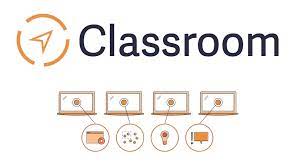
CLASSROOM RELAY, When school starts, parents everywhere are frantic. They want their children to be well-rounded and ready for college. Unfortunately, this can often be difficult when it comes to math and science. One way to help children prepare for college is by teaching them about STEM (science, technology, engineering, and math). But what do you do when your child is struggling in class?
CLASSROOM RELAY is a program that allows students to use technology in the classroom to help them learn. It’s a great solution for parents who want their children to succeed but don’t have the time or resources to help them in traditional ways. If you think your child could benefit from CLASSROOM RELAY, here are five things you can do right away: ###
Identify the problem (CLASSROOM RELAY)
There’s a problem in our classrooms. It’s a problem that has been growing for years, and it’s time to do something about it. Too many students are not receiving the education they deserve because their teachers are not able to communicate with them effectively. This is why we need classroom relay.
Classroom relay is a system that allows teachers to share information with each other more easily. Instead of having to carry all of their class’ materials around with them, teachers can simply send messages to one another through classroom relay. This will allow them to keep track of what is happening in their classes more efficiently, and it will also make sure that all students receive the same education.
If we want our schools to be successful, then we need to invest in classroom relay. It’s an affordable solution that will make a big impact on the quality of education our children receive.
Draft a plan
1. Draft a plan to overhaul your classroom relay program.
2. Create flyers and posters advertising the event and distributing them throughout your school.
3. Arrange for a local band or DJ to provide music during the relay race.
4. Plan a fun and exciting event for students to participate in on race day!
Implement the plan
1. Make a list of all the things you need to do in order to get started with the classroom relay. This will include things like finding a coach, creating an event page on Eventbrite, and sourcing materials for the activity.
2. Contact your school’s administration to let them know about your plan and ask for their support. Explain that you are working on a class relay and need permission to use the school’s facilities.
3. Find a coach! This is key to making your classroom relay successful. A coach will help you organize the activity, provide feedback, and help keep everyone on track.
4. Set up an event page on Eventbrite. This will be where people can find information about the classroom relay, sign up to join, and leave feedback (positive or negative).
5. Get materials ready for the activity! This includes posters advertising the event, sign-up sheets, prizes, and anything else you think might be necessary for a successful classroom relay.
6. Get everyone involved! You’ll need at least 16 people in order to have a successful classroom relay. It’s also important to let everyone know about the event in advance so that they can plan their schedules around it.
Evaluate the results
1. Evaluate the results
The purpose of this blog is to provide educators with ideas on how to improve the classroom relay. After reviewing the data, it is clear that there are a number of things that can be done immediately to improve the race.
Some of the most pressing issues include ensuring all participants are properly equipped and trained, implementing better race management techniques, and developing better communication strategies. In addition, it is important to consider how physical education classes can incorporate more elements of relay racing into their curriculum.
Overall, these results suggest that educators can make a significant impact on the classroom relay by taking measures to improve training and equipment, adopting effective race management practices, and increasing physical education content.
Educate your community
1. Educate your community about the importance of classroom relay.
2. Encourage your community to take part in classroom relay events.
3. Support local and international classroom relay events.
Petition your school district
Bringing awareness to the need for additional classroom relay programming is the first step in securing its implementation. Here are a few ways you can get your school district on board:
-Contact your local lawmaker and express your concerns about lack of available classroom relay programming.
-Create and distribute flyers or posters in schools highlighting the importance of classroom relay programming.
-Organize a student rally or assembly to support the implementation of more classroom relay programming.
-Write letters to the editor expressing your thoughts on the need for more classroom relay programming.
Take action
Schools that have implemented classroom relay have seen positive effects in student engagement, communication, teamwork and problem solving skills. Here are six things you can do to improve your classroom relay program:
1) Establish clear expectations for the program from both teachers and students. Teachers should ensure that all students are aware of the objectives of the relay, and that they are prepared to participate in an organized manner. Students should be aware of their responsibilities, and know when to take action based on information they receive from other team members.
2) Make sure all equipment is ready and accessible to all students. This includes pens, paper, dice, boards with questions or prompts, etc.
3) Teach team building skills early on in the program. By doing this, students will be more inclined to work collaboratively towards a common goal.
4) Encourage participation from all students by providing opportunities for them to contribute throughout the day. This can be done by including questions or prompts in class content or by awarding points for contributions made during relay activities.
5) Be creative when developing relay activities. By using different methods of communication (texting, online chat sessions, social media platforms), teachers can provide additional opportunities for interaction between students outside of traditional class settings.
6) Celebrate successes and learn from mistakes – just like any other educational endeavour! By assessing results regularly and making adjustments as needed, schools can continue to see positive impacts on student engagement levels and overall




